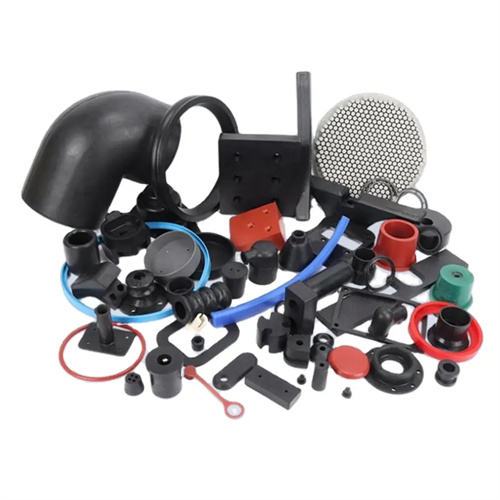General requirements for injection molding gating systems
The injection molding gating system, the melt channel connecting the injection molding machine nozzle to the mold cavity, must be designed to meet the overall requirements of “full filling, smooth flow, retention, and clean discharge.” Specifically, this means ensuring that the plastic melt completely fills the mold cavity, flows smoothly and without turbulence, effectively compensates for shrinkage during the holding phase, and easily separates the gating system solids from the molded part during demolding. The gating system includes main runners, branch runners, gates, and slug wells. These components must coordinate and cooperate to ensure melt filling with minimal pressure loss. For example, in a large television housing mold, optimizing the main runner diameter, branch runner layout, and gate size reduced filling pressure by 15%, reduced clamping force requirements by 200 tons, and significantly reduced equipment energy consumption.

The gating system’s dimensions must be designed to match the fluidity of the plastic melt. The main runner diameter is typically 4-12mm, determined based on the part weight and the injection molding machine nozzle diameter. It’s generally 0.5-1mm larger than the nozzle diameter to ensure smooth melt entry. The runner cross-section is often circular or trapezoidal, as a circular cross-section minimizes flow resistance. Its diameter is 5-10mm, and its length should be minimized, gradually decreasing from the main runner to the gate to prevent melt retention. For example, for thin-walled polypropylene parts (1mm wall thickness), the main runner diameter is 5mm, the runner diameter is 6mm, and the length from the main runner to the gate is controlled within 80mm, keeping the melt flow rate at 50-70mm/s and the pressure loss within 10MPa. For thick-walled polycarbonate parts (4mm wall thickness), the main runner diameter is 8mm, and the runner diameter is 10mm to accommodate the lower fluidity.

The gating system must ensure balanced melt flow. For multi-cavity molds, the length and cross-sectional dimensions of each runner must be strictly consistent to ensure that the melt reaches each cavity simultaneously, avoiding inconsistent part dimensions due to differences in filling time. A balanced gating system features symmetrical runners, with the distance from each cavity to the main runner within a 5mm deviation, and a cross-sectional tolerance of ±0.1mm. For example, a 16-cavity bottle cap mold uses star-shaped symmetrical runners, each 120mm long and 5mm in diameter. This keeps the filling time difference across the 16 cavities within 0.2 seconds, and the part weight deviation is less than 0.5g, far exceeding the design requirement of 1g. For unbalanced gating systems, gate size adjustments (e.g., using different diameter gates for different cavities) are necessary to compensate for flow differences and ensure consistent filling pressure across cavities.

The mold release performance of the gating system is crucial for improving production efficiency. Cold slug wells should be located at the end of the main runner and at the junction of the branch runners to store cold slugs formed by the cooling of the melt, preventing them from entering the mold cavity and affecting part quality. Their depth should be 1.5-2 times the main runner diameter and should work in conjunction with the ejection mechanism to ensure smooth ejection of the cold slugs. The shape and size of the gate should facilitate separation from the part. Point gates should have a diameter of 0.8-2mm and are prone to breakage during demolding. Side gates should be 1/3-2/3 the part wall thickness and 5-10mm wide, allowing for forced separation by the ejection mechanism. For example, a toy part uses a latent gate with a diameter of 0.5mm at the junction. This gate automatically breaks during demolding under the ejection force, eliminating the need for subsequent trimming and improving production efficiency by 20%. Furthermore, the weight of the solidified material in the gating system should be controlled within 30% of the part weight to minimize material waste.

The gating system must adapt to the subsequent processing requirements of the plastic part. For parts requiring painting or plating, the gate location should avoid leaving marks on the treated surface. For parts requiring high assembly precision, the gating system’s pressure distribution must be uniform to minimize dimensional variations caused by residual stress. For example, a certain automotive instrument panel requires an assembly surface precision of ±0.1mm. Its gating system utilizes multi-point symmetrical gates. Through mold flow analysis, the pressure-holding parameters of each gate are optimized to keep residual stress on the assembly surface below 5MPa, improving dimensional stability by 40% and increasing the assembly qualification rate from 88% to 99%. Furthermore, the gating system design must facilitate mold processing and maintenance. Standardized components such as main runner bushings and branch runner inserts should be used to reduce processing costs, and ample maintenance space should be reserved to facilitate cleaning of clogged runners or replacement of worn components. By meeting these overall requirements, the injection molding gating system can reliably guarantee the quality of plastic parts and achieve efficient and stable production.
